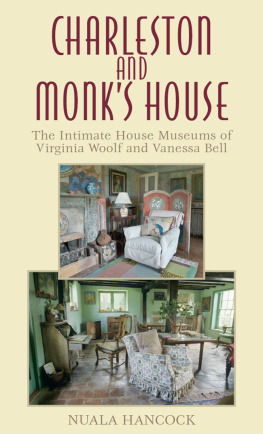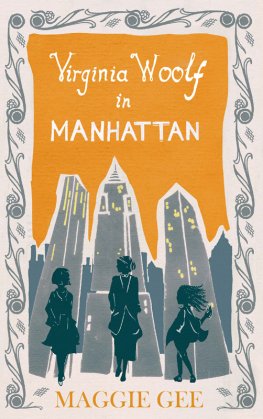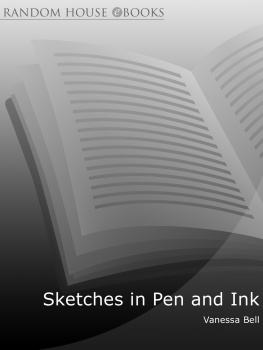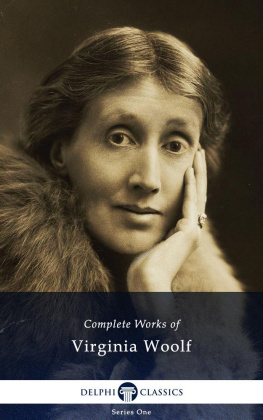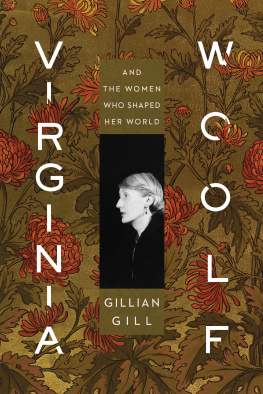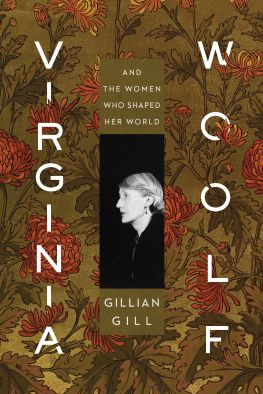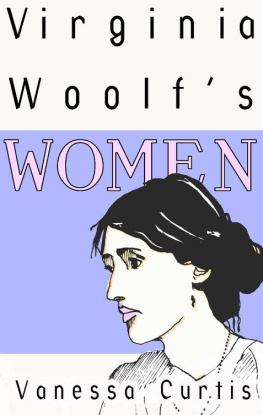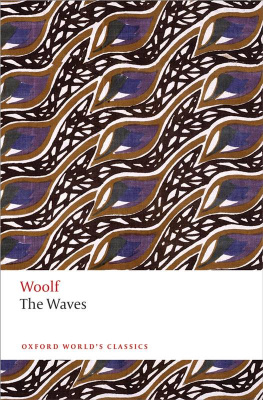| Charleston Farmhouse, Nr Firle, Lewes, East Sussex |
| Monks House, Rodmell, Nr Lewes, East Sussex |
| Vanessa Bell with Duncan Grant at Asheham, 191314 |
| Virginia Woolf by Lady Ottoline Morrell, June 1926 |
| Duncan Grant, Vanessa Bell painting at La Souco, 1960 |
| Vanessa Bell at her easel at Talland House, St Ives, surrounded by her siblings, c. 1893 |
| Vanessa Bells choreography made manifest on the interior surfaces at Charleston. Vanessa Bell, Lady Strachey, c. 1923; painted door, Charleston, 1918 |
| Vanessa Bell in full productive flight. Painted door, Charleston, 1918; detail |
| Stencilled wallpaper, c. 1945, garden room, Charleston |
| Detail |
| The ritualising of daily accoutrements. Vanessa Bell, painted table, c. 1952, dining room, Charleston |
| Charleston |
| Talland House, St Ives, c. 188294 |
| Monks House, from the back, showing the longitudinal extension |
| The walled garden at Charleston |
| The garden at Monks House |
| The dining room at Charleston |
| Monks House, from dining room to kitchen |
| Charlestons painted interiors |
| Vanessa Bell, window embrasure, c. 192530; canvas work day bed, 1943 |
| The curves and volutes of Vanessa Bells decorative criture |
| Detail |
3.12, 3.13,
3.14 | The circle: Bells signature motif |
| Decorative fire-surround, c. 192530 |
| Window embrasure, 1936 |
| Circles flat and opaque, marbled and moir. Decorative scheme, 1918 |
| Detail: Bells thick loop of paint |
| Architectural niche at Talland House |
| Painted niche at Charleston, 1936 |
| Vertical rhythms and barley-sugar uprights, balcony, Talland House |
| Painted rhythmical cross-hatching with arched terminals, Charleston |
| Bells restricted flower forms: exuberance restrained. Window panel, c. 191617 |
| Free-flowing forms multiply enframed. Painted door, 1918 |
| Monks House: the green sitting room |
| Flowers & leaves nodding in all round us Sitting room window |
| From kitchen to bedroom: a constant crossing of thresholds |
| Woolfs writing lodge, beneath the orchard wall |
| Vanessa Stephen in her mothers arms |
| Virginia Stephen in her mothers arms |
| Virginia and Vanessa Stephen with their family at Talland House, St Ives, c. 1893 |
| Painted table and chairs, Vanessa Bell and Duncan Grant, 1930s, Monks House sitting room |
| Bells containing material presence in Woolfs interior |
| Virginia Woolf at Monks House, 1932 |
| Virginia Woolf at Monks House, 19335, her sister presenced through her painted gestures on the tiled fireplace behind her (Vanessa Bell, c. 1931) |
| I have a vision of her now as she came up the path by the lawn at St Ives. Talland House, c. 1894 |
| Julia Stephen outside Talland House, among flowers, c. 1894 |
| The walled garden at Charleston |
| Cast after a Venus by Giovanni da Bologna |
| Here a a mass of flowers and as gay as possible; here a dithering blaze |
| Monks House garden spilling smoothly towards the Downs |
| An iterative terrain: from the house, across the garden, towards the writing lodge |
| There will be open doors in front; & a view right over to Caburn. I think I shall sleep there on summer nights |
| my wide, empty room to wake in, to go to bed in crossing the garden by the pale flowers |
| Monks House: sitting room, looking towards the fireplace |
| [we] prop our feet up on the side of the fire, and read endless books (Letters 4, 22 Apr 1930, p. 159) |
| Store Box 56, Charleston Archive |
| Virginia Woolfs glasses |
| Virginia Woolf, June 1926. Death comes; nothing matters; at least let me see all there is to be seen, read all there is to be read (Diary 4, 17 Feb 1931, p. 12) |
| Charleston: Vanessa Bells bedroom |
| Painted cupboard, Vanessa Bells bedroom |
| Dressing table, spare bedroom. |
| Monks House sitting room today |
| Virginia Woolf in the upper sitting room at Monks House, 1932 |
I am immensely grateful to the Charleston Trust and to the English department at the University of Sussex for inviting me to take up a research residency at Charleston in 2005, and to the Arts and Humanities Research Council who funded my research for the first three years of its duration.
This book arises from that privileged opportunity.
I would like to thank, in particular, Wendy Hitchmough, curator at Charleston, for the warmth of her welcome, her facilitating access to and guidance through the collection, her Bloomsbury erudition, and her unfalteringly generous support of this study, from inception to publication.
My warmest thanks are also due to Elena Gualtieri at the University of Sussex, for our stimulating discussions, her meticulous reading of my work and her astute academic guidance.
I am immensely grateful to Anne Olivier Bell and Angelica Garnett, for the live testimony that they have added to my work.
Thank you to Colin McKenzie, and to everyone at Charleston, for accommodating and encouraging me so generously. Particular thanks to Mark Divall, Tony Tree, Maggy Tyhurst, and to all my guiding friends.
Warm thanks, also, to the staff at the Special Collections Department at the University of Sussex library, and the National Trust Archive at Scotney Castle. Research becomes a deep pleasure when supported by such accomplished facilitators.
I am indebted to Peter Miall for giving so generously of his time and his knowledge about the history of Charleston and Monks House as house museums, and to Bet Inglis for her invaluable guidance.
I am grateful to the following for permission to quote from unpublished copyright sources: Henrietta Garnett for Vanessa Bells letters; the University of Sussex Library Special Collections and the Society of Authors for the Leonard Woolf Papers; the Special Collections at Sussex and Curtis Brown for Nigel Nicolsons letters; the National Trust for the Monks House papers at their archive at Scotney Castle.
I would like to thank Gill Lowe and Vara Neverow for permission to include a revised version of an article for the

